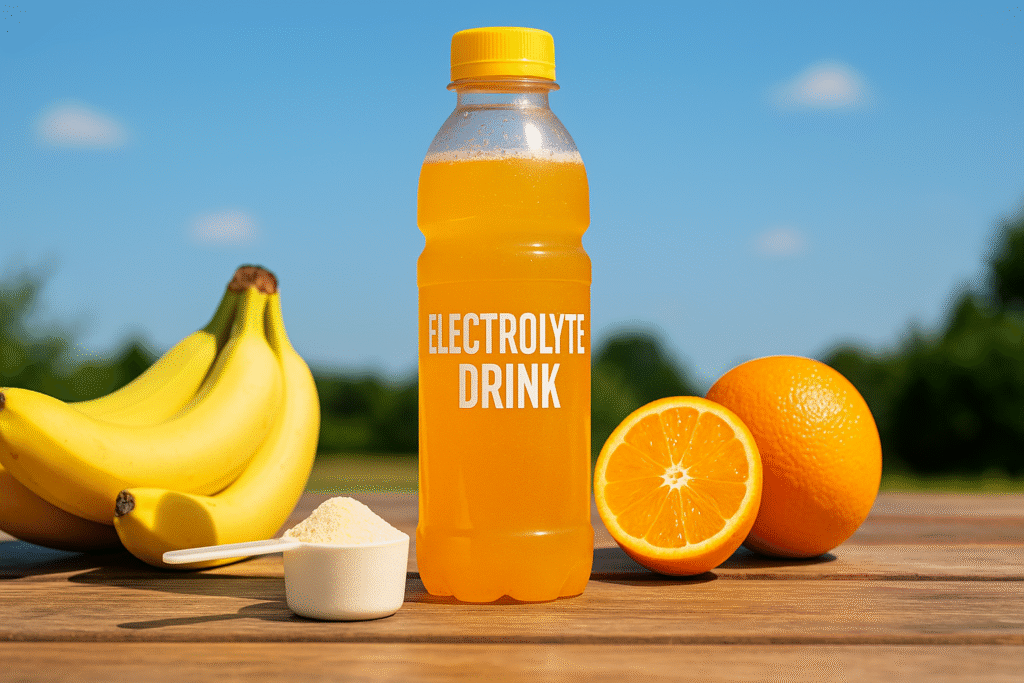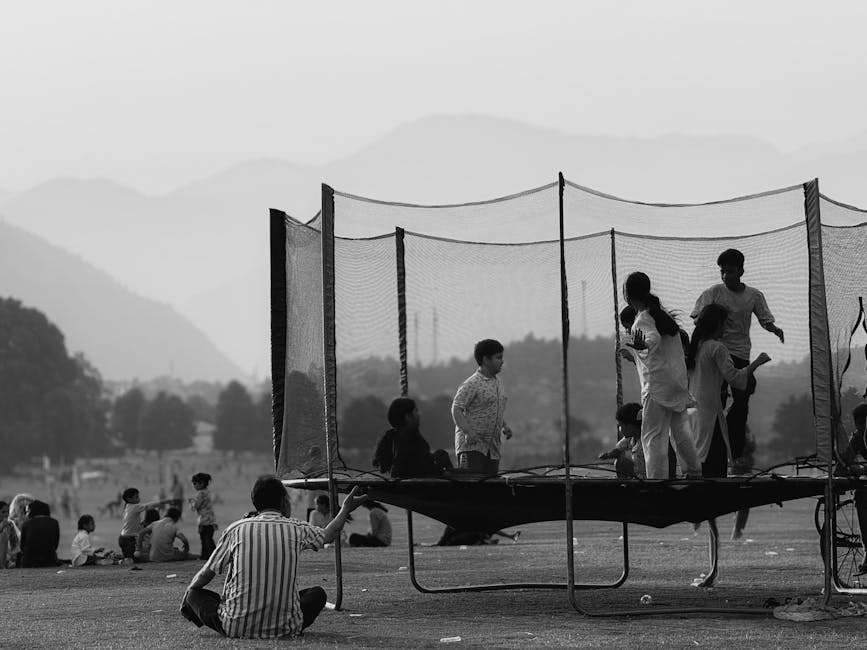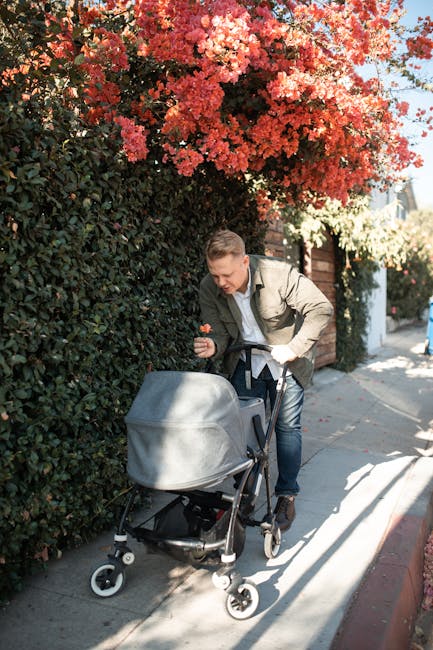- Table of Contents
- Introduction: Why Electrolytes Matter
- Tip 1: Increase Electrolyte-Rich Foods
- Tip 2: Sip Smart—Electrolyte Drinks
- Tip 3: Track Your Sweat and Intake
- Tip 4: Use Natural Supplements
- Tip 5: Balance Sodium and Potassium
- Tip 6: Monitor Symptoms of Imbalance
- Tip 7: Timing Your Electrolyte Intake
- Tip 8: When to Seek Professional Help
- Resources & Further Reading
- Q&A: Your Electrolyte Questions Answered
Importance of Safe Summertime Activities
Recognizing the Risks of Summer Work and Play
How to improve electrolyte balance starts with understanding why your body needs these vital minerals. From sun-soaked workouts to long garden days, you lose electrolytes every time you sweat. Imagine powering through heatwaves with energy, zero cramps, and crystal-clear focus—that’s the power of balanced electrolytes. In this guide, you’ll uncover eight science-backed tips to replenish sodium, potassium, magnesium, and calcium naturally, so you can thrive all summer long.

As summer rolls in, many individuals are eager to dive into outdoor activities, be it for work or play. However, it’s crucial to recognize the potential risks that come with increased exposure to the elements.
- Sunburns and Heat Exhaustion: Even a few hours outside can lead to painful sunburns or severe heat exhaustion if precautions are ignored.
- Injuries from Activities: Whether it’s hiking, gardening, or playing sports, injuries can occur if safety equipment isn’t used or if proper techniques aren’t followed.
Impact of Heat on Health and Safety
The heat poses serious health risks that shouldn’t be underestimated. For instance, working outdoors in extreme temperatures can lead to dehydration or heat-related illnesses.
- Dehydration Symptoms: Recognizing early signs such as dark urine or muscle cramps is essential.
- Elevating awareness: Regular breaks, hydration, and monitoring how frequently you’re exerting yourself can drastically improve your safety.
By staying informed and taking proactive measures, you can truly enjoy the summer while ensuring your health and safety are protected.

Staying Hydrated and Protected from the Sun
Importance of Hydration
Continuing from the need for safety during summertime activities, hydration emerges as a key factor in maintaining your health. During hot months, the body loses water and electrolytes through sweat, which can lead to dehydration if not replenished.
- How often should you drink electrolyte water?: It’s advisable to sip on electrolyte-enhanced beverages, especially after heavy sweating, to replenish lost fluids effectively.
- Pacing fluid intake: Setting hydration reminders can be an effective strategy to ensure you stay on track. Aim for at least 8-10 glasses of water daily, and more if you’re active.
Tips for Protecting Your Skin from UV Rays
Equally important is safeguarding your skin from harmful UV rays. Personal experiences highlight the need for protective measures; a sunburn from a day at the beach can linger for weeks.
- Sunscreen application: Always use a broad-spectrum sunscreen with at least SPF 30.
- Reapply every two hours: If swimming or sweating, be diligent about reapplying.
- Wear protective clothing: Long sleeves, hats, and UV-blocking sunglasses can offer additional defense against the sun.
Together, proper hydration and sun protection will enhance your summer experiences while keeping health risks at bay.

Proper Attire for Safety and Comfort
Choosing the Right Clothing for Summer Work
As we continue to prioritize safety during summer activities, selecting the appropriate attire becomes essential for both comfort and protection. Lightweight, breathable fabrics such as cotton or moisture-wicking materials can keep you cool and reduce the risk of overheating during outdoor work.
- Long sleeves can provide UPF protection against harmful UV rays.
- Light colors reflect sunlight, keeping you cooler than darker shades.
Sharing a personal anecdote, I remember a day spent gardening in heavy fabrics; the discomfort was unbearable, reminding me how crucial the right clothing can be.
Footwear Considerations for Different Activities
Equally important are the shoes you choose for your summer endeavors. The right footwear can significantly enhance your comfort and prevent injuries.
- Supportive sneakers or boots are ideal for hiking or outdoor work.
- Sandals or water shoes may be suitable for beach days but ensure they have good grip to prevent slipping.
By focusing on proper attire, you empower yourself to engage more fully in summer activities while ensuring safety and comfort throughout the day.

Time Management and Heat Avoidance
Scheduling Breaks and Rest Periods
Continuing with our focus on safety during summer activities, effective time management is vital to avoid heat-related illnesses. Scheduling regular breaks can help mitigate the risk of overheating. Personally, I’ve learned the hard way that pushing through fatigue can lead to exhaustion. Here are some practical tips:
- Implement the “20-30 Rule”: For every 20-30 minutes of work, take a 5-minute break to hydrate and cool down.
- Listen to your body: If you feel fatigued, take a longer break.
Strategies for Working in Cooler Hours
Additionally, consider adjusting your schedule to work during the cooler hours of the day.
- Early mornings are usually less hot and more pleasant for outdoor tasks, while late afternoons can also provide relief as temperatures begin to drop.
- Plan important tasks around these times to boost your productivity while ensuring comfort.
By managing your time effectively and recognizing the best hours to work, you can enjoy summer activities without compromising your health.

Creating Safe Environments
Tips for Setting Up Safe Workspaces
As we delve into the importance of creating safe environments, setting up your workspace effectively is fundamental. A well-organized area can drastically reduce the risk of accidents.
- Clear clutter: Ensure tools and materials are stored properly to prevent tripping hazards.
- Use safety gear: Don’t forget to wear appropriate equipment like gloves, goggles, and helmets if necessary.
Reflecting on a past summer project, I realized that a tidy workspace not only keeps you safe but also boosts productivity.
Importance of Proper Ventilation and Shade
Equally crucial is ensuring proper ventilation and shade in your work area.
- Create shaded zones: Using canopies or natural shade (like trees) can provide relief from the sun, making it more comfortable during breaks.
- Ventilate indoor spaces: If you’re working indoors, open windows or use fans to circulate air, preventing heat buildup.
By prioritizing these elements, you create a safer, more efficient environment that enhances both comfort and productivity during those scorching summer days.

Recognizing Signs of Heat-Related Illnesses
Symptoms of Heat Exhaustion
As we focus on creating safe environments, understanding the signs of heat-related illnesses is crucial for maintaining well-being during summer activities. Heat exhaustion can sneak up on you, especially during intense work or play. Common symptoms to watch out for include:
- Heavy sweating and weakness
- Dizziness and fainting
- Nausea or vomiting
- Cool, pale skin
I once ignored these symptoms during a sweltering afternoon, only to find myself feeling extremely fatigued after returning inside. Recognizing these signals can save you from more severe conditions.
Difference Between Heat Exhaustion and Heatstroke
While heat exhaustion can be serious, it’s essential to distinguish it from heatstroke, which is far more severe.
- Heatstroke symptoms include: Confusion, a high body temperature (above 103°F / 39.4°C), and hot, dry skin.
- Immediate action: Heatstroke is a medical emergency requiring urgent treatment.
Being able to recognize these differences can ensure that you take appropriate measures quickly, ultimately safeguarding your health during the summertime.

First Aid Preparedness
Essentials for a Summertime First Aid Kit
Transitioning from recognizing heat-related illnesses, it’s equally important to be prepared for emergencies by having a well-stocked first aid kit. During summer activities, the right supplies can make a significant difference in addressing injuries or health issues quickly. Essential items for your summer first aid kit should include:
- Adhesive bandages in various sizes for cuts and scrapes
- Antiseptic wipes to clean wounds
- Hydrocortisone cream for allergic reactions or rashes
- Electrolyte packets to help with dehydration
- Pain relievers like ibuprofen or acetaminophen
I learned a valuable lesson one summer when a minor scrape turned into a bigger issue simply because I didn’t have the essentials on hand.
Training for Handling Emergencies
Moreover, having the right supplies is only part of the equation; being trained to use them effectively is vital.
- Consider CPR and first aid courses: Knowing what to do in an emergency can save a life.
- Practice makes perfect: Regularly refresh your skills through local workshops or online courses.
With preparedness and knowledge, you’ll be ready to tackle any unexpected incidents that summer may throw your way, ensuring fun and safety go hand in hand.

Incorporating Regular Physical Activity
Benefits of Exercise in Summer
As we wrap up our discussion on first aid preparedness, let’s shift gears to the benefits of incorporating regular physical activity in the summer. Engaging in exercise during these warmer months can boost your mood, improve cardiovascular health, and enhance your overall well-being. Personally, I’ve found that a brisk morning jog or evening bike ride does wonders for my energy levels and keeps me motivated.
- Promotes mental clarity: With longer daylight hours, exercising outdoors can enhance your mood and reduce stress.
- Supports weight management: Staying active helps counterbalance the extra calories often consumed during barbecues and picnics.
Safe and Effective Workouts for Hot Weather
However, it’s crucial to adapt your workouts to ensure safety during the heat.
- Opt for early morning or evening sessions: These times are typically cooler and more comfortable.
- Hydration is key: Always have water on hand, and consider incorporating electrolyte-rich snacks for extended workouts.
- Low-impact exercises: Activities like swimming or yoga in shaded areas offer great alternatives without overexerting yourself.
By incorporating regular physical activity safely, you can fully enjoy the vibrancy of summer while staying healthy and active.

Resources
Q&A
Q: What is an electrolyte imbalance?
A: An electrolyte imbalance occurs when you have too much or too little of certain minerals in your body, which may signal an underlying problem such as kidney disease.
Q: What do electrolytes do?
A: Electrolytes are minerals that carry an electrical charge in body fluids. They help balance fluids, regulate heart rhythm, and support nerve and muscle function.
Q: What are the types of high electrolyte imbalances?
A: High imbalances include hypernatremia (sodium), hyperkalemia (potassium), hypercalcemia (calcium), hyperchloremia (chloride), hypermagnesemia (magnesium), hyperphosphatemia (phosphate), and alkalosis (bicarbonate).
Q: What are the types of low electrolytes or electrolyte deficiencies?
A: Deficiencies include hyponatremia (sodium), hypokalemia (potassium), hypocalcemia (calcium), hypochloremia (chloride), hypomagnesemia (magnesium), hypophosphatemia (phosphate), and acidosis (bicarbonate).
Q: What causes an electrolyte imbalance?
A: Imbalances arise when organs like the kidneys and liver, which regulate electrolyte movement in and out of cells, cannot maintain proper levels—often due to underlying health conditions disrupting normal fluid compartments.
Q: What are the risk factors for an electrolyte imbalance?
A: Higher risk exists in infants, young children, older adults, and in those with burns, cancer, cardiovascular disease, dehydration (from vomiting, diarrhea, sweating, or fever), overhydration, eating disorders, kidney or liver disease, substance use disorder, or who take medications like diuretics and laxatives.
Q: What are electrolyte imbalance symptoms?
A: Symptoms vary by severity but can include confusion, diarrhea or constipation, fatigue, headaches, arrhythmias, muscle cramps or spasms, nausea, vomiting, and tingling or numbness in the limbs.
Q: How is an electrolyte imbalance diagnosed?
A: Diagnosis is made via an electrolyte panel blood test (or basic/comprehensive metabolic panels), often ordered during routine exams, hospital stays, when certain conditions are present, or when symptoms suggest an imbalance.
Q: How are electrolyte imbalances managed or treated?
A: Treatment depends on cause and severity. Mild imbalances may self-correct; dehydration is treated with electrolyte drinks or oral rehydration salts. Medical interventions include IV fluids or medications, supplements, or hemodialysis for severe cases.
Q: What are the complications of an electrolyte imbalance?
A: Severe imbalances can lead to life-threatening issues such as coma, seizures, and sudden cardiac arrest.
Q: How can I prevent an electrolyte imbalance?
A: Maintain proper hydration—especially during prolonged diarrhea, vomiting, or heavy sweating—to help keep electrolyte levels balanced.
Q: When should I call the doctor?
A: Contact your provider if you experience changes in heart rate, extreme fatigue, prolonged diarrhea or vomiting, signs of dehydration, or unexplained confusion, muscle cramps, numbness, or tingling.
Q: What questions should I ask my doctor?
A: You might ask:
- What type of electrolyte imbalance do I have?
- What caused it?
- What is the most appropriate treatment?
- What are potential side effects?
- How can I reduce my risk of recurrence?
- Should I watch for specific complications?